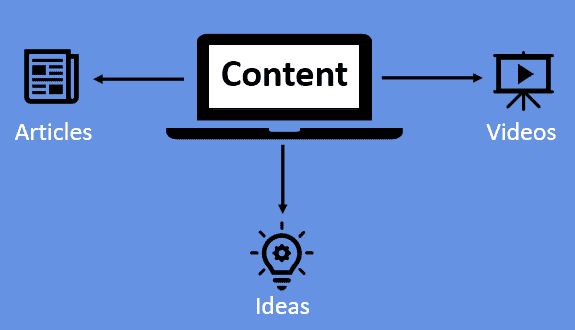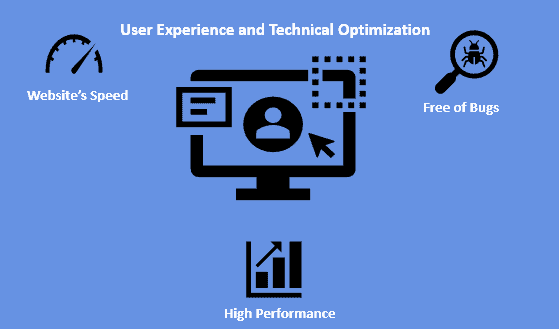1. Introduction
In today’s digital landscape, having a strong online presence is crucial for all businesses and website owners.
One of the most common and widely used strategies to achieve this is the Search Engine Optimization (SEO). SEO is the practice of optimizing websites to improve their visibility in search engine results pages (SERPs).
In this tutorial, we’ll delve into SEO, exploring its definition, importance, key components, and best practices.
2. Understanding SEO
Search Engine Optimization refers to optimizing a website’s content, structure, and other elements to increase its visibility and rankings in search engine results. Generally talking, the goal is to attract organic (non-paid) traffic and improve the website’s overall performance.
2.1. Importance of SEO
There are several reasons behind the importance of SEO in the digital marketing landscape:
- Organic Search Traffic: Most online experiences start with a search engine. Hence, ranking higher in search results leads to increased organic traffic, which can result in more conversions and revenue
- Credibility and Trust: Users tend to trust websites that appear at the top of search results. Consequently, higher rankings instill confidence and credibility in the minds of users
- User Experience: SEO involves optimizing various website elements, such as page speed, mobile-friendliness, and user-friendly navigation. Resulting in, enhancing the overall user experience, leading to higher engagement and satisfaction
3. Components of SEO
On-page SEO, off-page SEO, and technical SEO are considered the key components of SEO:

3.1. On-Page SEO
On-Page SEO focuses on optimizing individual web pages to improve their search engine rankings. Key aspects include:
- Keyword Research: Identifying relevant keywords and phrases that users are likely to search for.
- Content Optimization: Creating high-quality, and engaging content that aligns with user intent and incorporates relevant keywords naturally
- Meta Tags: Optimizing meta titles, descriptions, and header tags to provide search engines with concise information about the page’s content
- URL Structure: Ensuring that URLs are descriptive, user-friendly, and contain relevant keywords
3.2. Off-Page SEO
Off-Page SEO refers to optimization efforts that occur outside the website itself. Key aspects may include:
- Link Building: Acquiring high-quality backlinks from reputable websites to improve the website’s authority and credibility
- Social Media: Utilizing social media platforms to promote the website’s content, increase brand visibility, and engage with the target audience
- Influencer Marketing: Collaborating with influencers in the industry to amplify brand awareness and reach a wider audience
- Guest Blogging: Publishing valuable content on other authoritative websites to gain exposure, build backlinks, and enhance brand reputation
3.3. Technical SEO
Technical SEO involves optimizing the technical aspects of a website to improve its crawlability, indexability, and overall performance. Key aspects include:
- Website Speed: Optimizing page load times to provide a smooth user experience and meet search engine requirements
- Mobile Friendliness: Ensuring that the website is responsive and adapts well to different screen sizes, as mobile usage continues to rise
- XML Sitemap: Creating and submitting an XML sitemap to search engines, allowing them to better understand the website’s structure
- Robots.txt: Implementing a robots.txt file to guide search engine crawlers on which pages to crawl or exclude
4. Best Practices for SEO
There are several ways to enhance our website’s performance, such ways may include:
4.1. Quality Content
Is the process of creating valuable, unique, and relevant content that addresses user queries and provides a comprehensive answer to their search intent.
For example, instead of just creating generic product descriptions, a clothing retailer can provide in-depth articles on fashion trends, styling tips, and outfit ideas that are valuable to their target audience.
The following figure shows the importance of the quality content:

4.2. Keyword Research and Optimization
Is the keyword research process to identify relevant terms and incorporate them naturally into the website’s content, headings, and meta tags.
For instance, a travel agency specializing in adventure tours can conduct keyword research and optimize its website content with terms like “best adventure destinations,” “extreme sports vacations,” and “adventure travel packages” to attract relevant organic traffic.
The following figure shows how to research and optimize keywords:

4.3. User Experience and Technical Optimization
This way can be used to ensure a smooth user experience by optimizing website speed, mobile-friendliness, navigation, and reducing technical errors.
For example, an e-commerce store can optimize its website for mobile devices, ensuring that product pages load quickly and are easy to navigate on smartphones and tablets. They can also fix broken links, improve website speed, and provide a user-friendly checkout process.
The following figure shows the importance of the user experience and its optimization:

4.4. Link Building and Digital Outreach
Is the process of building a diverse and high-quality backlink profile by engaging in ethical link-building practices, guest posting, and forging partnerships with relevant websites.
For instance, a food blogger can reach out to other food bloggers or recipe websites to collaborate on guest posts. By providing unique and valuable content to these websites, they can earn backlinks that drive traffic to their blog and improve their search engine rankings.
The following figure shows how to link two website’s contents:

4.5. Monitoring and Analysis
Regularly monitoring website performance using analytics tools, analyzing search rankings, and making data-driven adjustments to improve SEO strategies.
For example, an online marketing agency can use analytics tools to track website performance metrics such as organic traffic, bounce rate, and conversion rate. By analyzing the data, they can identify areas for improvement, such as optimizing underperforming landing pages or refining keyword targeting.
The following figure illustrates the monitoring process for a website’s performance:
![]()
5. Future Trends in SEO
As the digital landscape continues to evolve, it’s important to keep an eye on future trends in SEO. Staying ahead of the curve can help businesses adapt and maximize their online visibility. Here are some potential future trends to consider:
5.1. Voice Search Optimization
With the rise of voice assistants and smart speakers, voice search is becoming increasingly popular. Optimizing website content to align with voice search queries, focusing on long-tail keywords and conversational language, can help businesses capture voice-driven organic traffic.
5.2. Mobile-First Indexing
As mobile usage continues to grow, search engines are prioritizing mobile-friendly websites. Mobile-first indexing means that search engines primarily use the mobile version of a website’s content for indexing and ranking. Ensuring responsive design, fast loading times, and a seamless mobile experience will be crucial for SEO success.
5.3. Artificial Intelligence (AI) and Machine Learning
AI and machine learning algorithms are shaping the future of search engines. These technologies are becoming increasingly sophisticated at understanding user intent and delivering relevant search results. Hence, businesses should explore AI-powered SEO tools and strategies to optimize their content and stay competitive.
5.4. User Experience (UX) Optimization
User experience will remain a critical factor in SEO. Search engines aim to provide users with the best possible experience by ranking websites that offer fast loading times, easy navigation, and high-quality content. Hence, investing in UX optimization will not only benefit SEO but also enhance overall user satisfaction and engagement.
5.5. Video and Visual Search
Visual content, including videos and images, is gaining prominence in search results. Optimizing videos with relevant titles, descriptions, and tags, as well as using structured data to provide search engines with context, can improve visibility in video and visual search results.
By staying updated on these future trends and adapting SEO strategies accordingly, businesses can position themselves for long-term success and maintain a competitive edge in the evolving digital landscape.
6. Conclusion
In conclusion, Search Engine Optimization (SEO) plays a vital role in establishing a strong online presence and improving website performance. By implementing effective SEO strategies, businesses and website owners can attract organic traffic, build credibility, enhance user experience, and achieve their conversion goals.